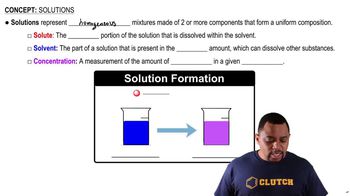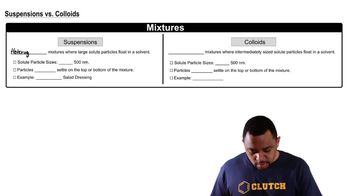Textbook Question
Identify each of the following as characteristic of a solution, colloid, or suspension:
a. particles of this mixture remain inside a semipermeable membrane but pass through filters
 Verified step by step guidance
Verified step by step guidance Verified video answer for a similar problem:
Verified video answer for a similar problem:

